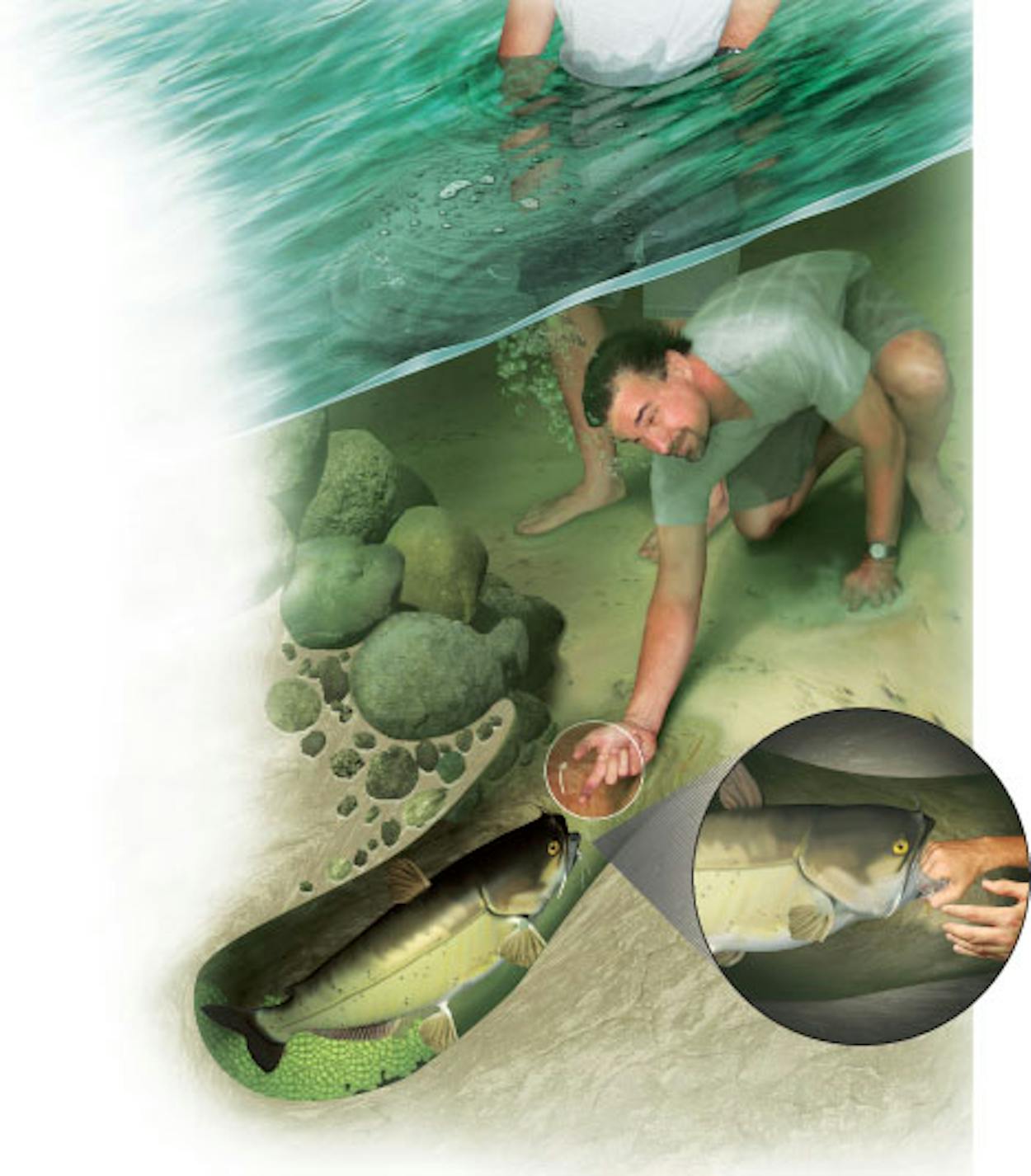Catching a catfish with your bare hands has been a tradition passed down for generations, but it has only been legal in Texas since June 17. That’s when Governor Rick Perry signed a bill that officially permits noodling. “No one knows why it was illegal,” said Houston representative Gary Elkins, the author of the legislation, though some critics worry that the practice hurts the catfish population, because it occurs during the spring and summer spawning seasons. “The fish nest in holes along riverbanks to defend their eggs from intruders,” says Bradley Beesley, the Austin-based director of the documentary Okie Noodling. The hiding spot makes them easy prey, but “when attacked,” Beesley says, “they bite.”
the nest
Though the creeks and lakes of North and East Texas are rich with flathead catfish, the hardest part about noodling is finding a nest. “It takes people years to cultivate these spots,” Beesley says. He advises fishing with a knowledgeable noodler who knows where to find underwater holes, hollow tree trunks, and other nooks where the fish hide.
the catch
Dive next to the hole and stick your hand in the catfish nest. Since the fish is protecting its eggs, it will react aggressively, so be prepared (no one will think you’re a sissy if you wear gloves). Grab the “suitcase-handle-like” lower jawbone, and pull it close to you. If it’s a larger fish, reach through its gills, but know that this will kill the animal. Then push your catch toward the surface—your noodling buddy should be ready to help you rassle the fish onto the boat or bank.
the prize
You’ll need more equipment to cook the fish than catch it. Clean and skin the fish, then dip it in a simple cornmeal batter, fry in hot oil until golden brown, and serve with hush puppies.








